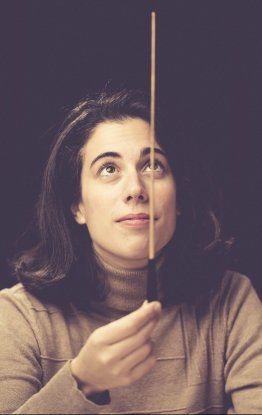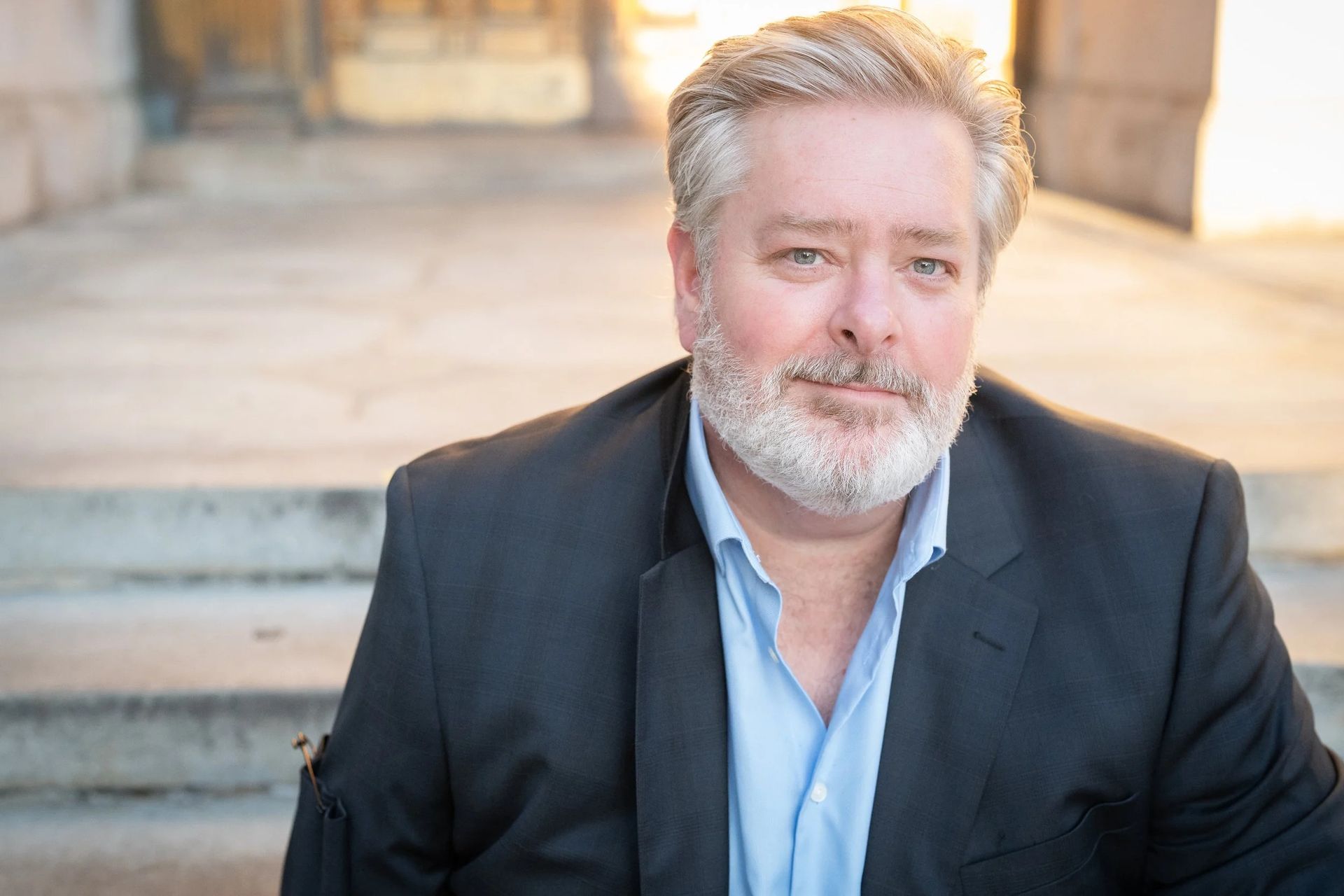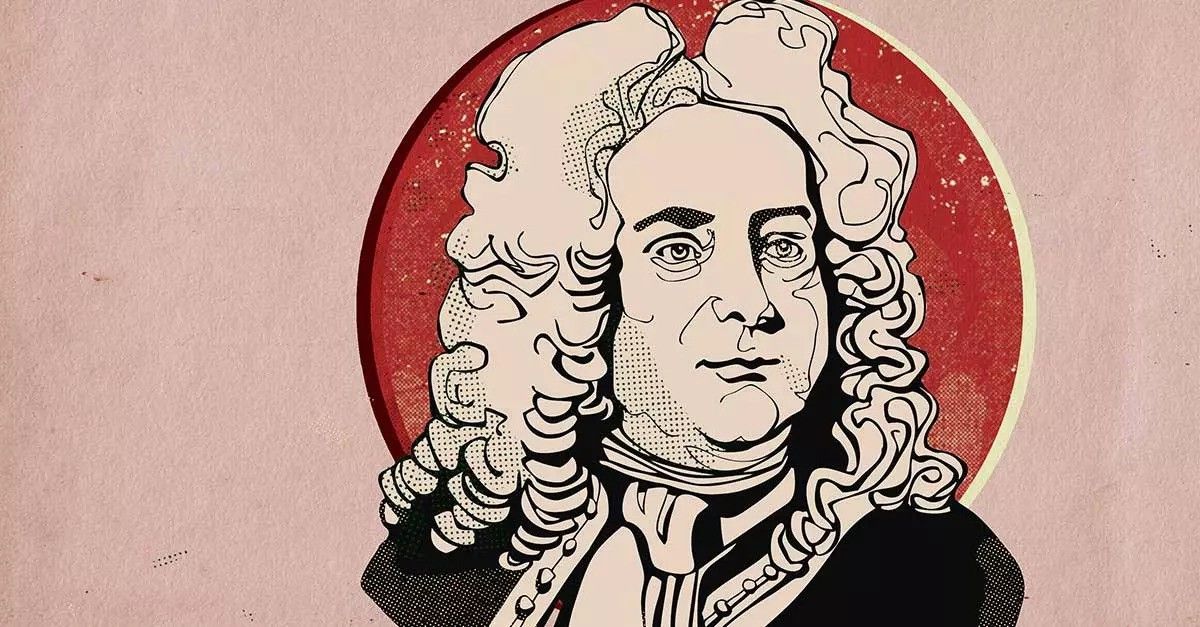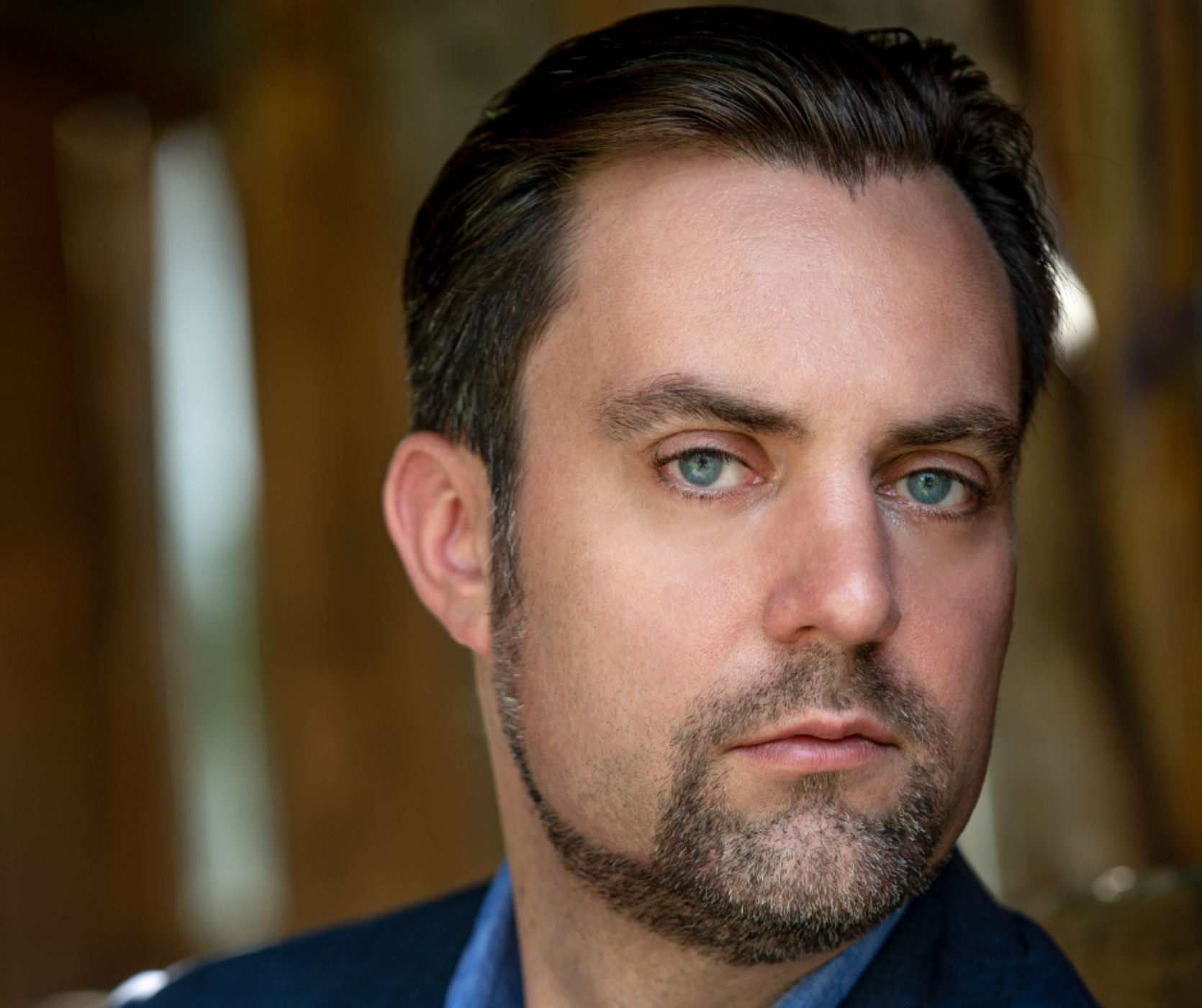Learn the story behind A Night at the Opera with Conductor Marie Jacquot, April 13
Share

Soloists Julia Radosz and Jonathan Burton
join the RI Philharmonic Orchestra
The TACO Classical Series concert is on Saturday, April 13, at 8 p.m.
The Open Rehearsal is on Friday, April 12, at 5:30 p.m.
For A Night at the Opera, the RI Philharmonic Orchestra shares The VETS stage with guest conductor Marie Jacquot and soloists Julia Radosz, soprano, and Jonathan Burton, tenor, for favorites from the heart of grand opera. The program includes Rossini’s William Tell Overture and Respighi’s Roman Festivals.
Overture to William Tell
GIOACCHINO ROSSINI (1792–1868)
In 1828, when Gioacchino Rossini began composing William Tell, he was the world’s most famous living composer. (Beethoven had died the year before.) Rossini had been living in Paris for four years. The French people loved his Italian operas and could not do enough for him, but his own goal was to compose French operas. To that end, Rossini worked diligently to master the French language and the intricacies of French stage declamation. He reached his goal with the opéra comique titled Le Comte Ory in 1828, finishing it as he began the grand opera, Guillaume Tell. The following year Tell premiered successfully. Rossini decided at that point to rest on his laurels and retire a rich man—at the ripe old age of 37!
William Tell is the story of a Swiss patriot of the 13th century who led a successful revolution against Hapsburg domination. The overture, unlike other Rossini overtures, is a descriptive tone poem. Each of its four sections treats some aspect of the setting or story. First is a serene Swiss mountain scene, twice interrupted by approaching thunder. Then, the storm itself arrives in full fury. In the third section, we hear a Swiss herdsman’s alphorn (played here on an English horn). The final section is the best-known part of the overture due to its association with the 20th-century’s Lone Ranger. Rossini’s intention, however, was to begin with a trumpet fanfare that calls the Swiss people to arms against their oppressors. The following quick march represents the regaining of freedom in the fatherland.
Tosca: “E lucevan le stele”
GIACOMO PUCCINI (1858–1924)
Tosca premiered in 1900 and was the first opera by Giacomo Puccini completely modelled on a new trend: verismo (realism). Melodramatic in nature, veristic opera librettos typically dealt with characters of the lower or artistic classes (as opposed to the aristocracy or gentry featured in earlier operas), and focused on sensationalist topics such as sex, violence, murder and revenge —all mostly for shock value.
The story of Tosca is built on a love triangle, the characters known by their last names: Tosca, a famous singer; Cavaradossi, a highly talented painter; and Scarpia, “a bigoted satyr and hypocrite, secretly steeped in vice, yet most demonstratively pious.” Scarpia takes Cavaradossi prisoner for a suspected political crime, and in Act II, he tries to seduce Tosca, trading her “favors” for Cavaradossi’s freedom. The painter, however, must undergo what he believes will be a fake execution. Tosca secretly kills Scarpia with his own dagger.
Act III takes place on the roof of Castel Sant’Angelo (the prison). The firing squad leads Cavaradossi in. He has one hour and asks to write a letter. Losing himself in memories of Tosca, he sings “E lucevan le stelle.” Now Tosca is ushered in, and soon the couple sing a love duet. The “mock” execution then takes place, and after the firing squad has left, Tosca runs to her lover. However, finding him dead, and hearing the soldiers returning (to avenge Scarpia’s newly-discovered death), she looks for an escape route. There is just one, and she takes it—leaping from the roof as the curtain comes down.
Gianni Schicchi: “O mio babbino caro”
GIACOMO PUCCINI (1858–1924)
During World War I (1914-1918), Puccini occupied himself with Il trittico (The Triptych), made up of three one-act operas. He modeled his scheme on the Parisian Grand Guignol: a horrific episode (Il tabarro), a sentimental tragedy (Suor Angelica), and a comedy (Gianni Schicchi). Il trittico was premiered at the Metropolitan Opera in early 1918, and the comic finale received the widest acclaim, as it has ever since.
Gianni Schicchi was a real person of the 14th century mentioned in Dante’s Inferno. He was a lawyer, and in the opera, the greedy family of a recently deceased rich man, who has left all his money to the Church, tries to engage him to substitute a fraudulent will naming them as heirs. He is reluctant at first, but his daughter, Lauretta, wishes to marry Rinuccio, one of the heirs. In the aria “O mio babbino caro” (O, my dear little daddy), she persuades him to reconsider. Schicchi impersonates the rich man on his deathbed and dictates a will to two notaries, leaving everything to himself. The angered family can do nothing for fear of being punished along with him, and now he will have enough money to give to his daughter, so she can marry her beloved.
La Bohème: “Quando me’n vo”
GIACOMO PUCCINI (1858–1924)
At the beginning of 1896, the world was waiting for another opera by Giacomo Puccini, and on February 1, the world got it. La Bohème premiered in Turin under the baton of Arturo Toscanini. Public response was mixed, and some critics viewed the opera as trivial, but nothing could stop its rapid international circulation. By 1898, both Covent Garden (London) and the Paris Opéra Comique had produced the opera, and 53 years later it had achieved 1,000 performances worldwide.
The second act is a street scene with a mood of gaiety. Musetta, a woman of “easy virtue,” enters with an aging wealthy “patron,” who has bought her the flashy clothes she is wearing. Now comes one of the opera’s best-known numbers, Musetta’s Waltz, “Quando me’n vo’ soletta per la via” (As I go merrily down the street).
Turandot: “Nessun dorma”
GIACOMO PUCCINI (1858–1924)
A composer’s last work is often something unique, even perhaps transcendental. Just think for a moment about Mozart’s Requiem.
It was Luciano Pavarotti who made “Nessun dorma” very popular. In the opera, Turandot is a beautiful cold-hearted princess. Any man who wants to marry her must answer three riddles correctly. Failure means beheading. The mysterious Prince Calaf fulfills the requirement but gives the reluctant Turandot an out. If anyone can reveal his name by morning, he will willingly go to his death. She, in turn orders that no one will sleep until the name is known. Some heralds announce, “Tonight no one in Peking [now Beijing] sleeps” (“Questa notte nessun dorma in Pekino”), and the chorus gloomily repeats the words “no one sleeps” (“nessun dorma”). In the first words of his aria, the Prince repeats the words of the chorus. (Incidentally, the opera has a happy ending.)
Madama Butterfly: Excerpts
GIACOMO PUCCINI (1858–1924)
Vogliatemi bene: Madame Butterfly is the story of a young Japanese girl, Cio-Cio San, who falls in love with and marries Pinkerton, an American naval officer. Her family rejects her, and she rejects her religion to embrace Pinkerton’s Christianity; to the Japanese, she is a social outcast. At the end of Act I comes Puccini’s longest love duet, Vogliatemi bene. It reaches a musical and emotional climax as Cio-Cio San expresses confusion about her cultural and family traditions versus the feelings of her heart toward Pinkerton. She pleads with him for reassurance.
Un bel di vedremo: After a brief happy period, he must leave. However, he never writes, not even once, not even to acknowledge the son born to them. Yet, Cio-Cio San goes on as if they were still married, refusing to believe she has been abandoned, believing that “one fine day” he will return to make a life with her.
The second act takes place three years after Pinkerton, the naval officer, has left. In her child-like devotion to him, she sings the aria, Un bel di, about the day when he will return to claim his bride:
One fine day, we shall see
A thread of smoke rising
Over the horizon.
And then the ship will appear.
Then the white ship
Enters the harbor.
Her salute thunders out.
You see? He has come!
Addio fiorito asti: When Pinkerton does return, it is to tell Cio-Cio-San that he has re-married—an American woman. Both Pinkerton and Butterfly wrestle with grief and consternation. Unable to outwardly say goodbye to his Butterfly, Pinkerton bids a tearful farewell to their home in Addio fiorito asti. (In the final scene, Cio-Cio San commits suicide.)
Intermezzo from Cavalleria Rusticana
PIETRO MASCAGNI (1863-1945)
Pietro Mascagni was a one-masterpiece composer, and that masterpiece was Cavalleria Rusticana (Rustic Chivalry). Based on a short story, this one-act opera was packed with realism, high emotion and swift action. With a near-perfect libretto, Cavalleria Rusticana reached an operatic pinnacle difficult to equal. As opera authority Gustav Kobbé states, “In it, in 1890, Mascagni, at the age of 26, ‘found himself,’ and ever afterwards was trying, less successfully, to find himself again.”
The story of Cavalleria Rusticana takes place in a peasant village. It is the tale of one woman whose lover is unfaithful with another woman, who was his former lover and now is the wife of another man. Much of the opera takes place in a village square. At the point where the plot is thoroughly established comes the Intermezzo, which recapitulates, in Kobbé’s words, “what has gone before, and foreshadows the tragedy that is impending. . . . The effect is accomplished by means of terse, vibrant melodic progression. It is melody and yet it is drama.”
Respighi, Roman Festivals (Feste Romane)
OTTORINO RESPIGHI (1879-1936)
There are only a few 20th-century masters of colorful orchestration. Leading composers among this select group, such as Ottorino Respighi, normally worked in a musical style that was a holdover from the colorful 19th century. In fact, Respighi received his advanced training in orchestration directly from one of the world’s most coloristic orchestrators, Nicolai Rimsky-Korsakov. In 1900, Respighi traveled to Russia to play violin in the St. Petersburg Imperial Opera Orchestra and to study with Rimsky-Korsakov. His influence is felt throughout Respighi’s symphonic poems.
Two dominant themes run through much of Respighi’s orchestral program music. One is a choice of subject that is sensorially perceived (rather than intellectual). The other is his interest in the remote past. Both are at work in Respighi’s so-called “Roman trilogy,” which includes Fountains of Rome (1917), Pines of Rome (1924) and Roman Festivals (1928). As with Fountains and Pines, the composer wrote notes describing the programmatic content of Roman Festivals.
The following are his words:
- The Circus Maximus: A threatening sky over the Circus Maximus, but the people are celebrating: Hail Nero! The iron gates open, and the air is filled with a religious chant and the roaring of savage beasts. The mob undulates and rages: serenely, the song of the martyrs spreads, dominates, and finally is drowned in the tumult.
- The Jubilee: Weary, in pain, the pilgrims drag themselves through the long streets, praying. At last, from the summit of Mount Mario, is seen the holy city: Rome! Rome! And the hymn of jubilation is answered by the clangor of multitudinous church bells.
- The October Excursions: Fetes of October, in the castles garlanded with vine leaves—echoes of the hunt—tinkling of horse-bells—songs of love. Then, in the balmy evening, the sound of a romantic serenade.
- The Eve of Epiphany in Piazza Navona: A characteristic rhythm of bugles dominates the frantic clamor: on the tide of noise float now and again rustic songs, the lilt of saltarellos [dances], the sounds of the mechanical organ in some booth, the call of the showman, hoarse and drunken cries, and the stornello [song] in which the spirit of the populace finds expression: “Let us pass, we are Romans.”
***At A Glance***
A Night at the Opera
TACO Classical Series
8 p.m, Saturday, April 13, 2019
Marie Jacquot, conductor
Julia Radosz, soprano
Jonathan Burton, tenor
ROSSINI: William Tell (Guillaume Tell): Overture
PUCCINI: E lucevan le stelle (Tosca), O mio babbino caro (Gianni Schicchi), Quando me’n vo’ (La Bohème) and Nessun Dorma (Turandot)
PUCCINI (Madama Butterfly): Addio fiorito asil, Un bel di vedremo and Vogliatemi bene
MASCAGNI: Intermezzo from Cavalleria Rusticana
RESPIGHI: Roman Festival (Fest Romane)
BUY TICKETS
Tickets start at $15 (including all fees), and can be purchased online at tickets.riphil.org, in person from the RI Philharmonic Orchestra Box Office in East Providence, or by phone 401.248.7000 (Mon.-Fri. 9 a.m.-4:30 p.m.). On day of concerts only, tickets are available at The VETS Box Office (Friday, 3:30 p.m.–showtime; Saturday, 4 p.m.-showtime). Discounts are available for groups of 10 or more. Questions can be emailed to boxoffice@riphil.org.
Open Rehearsal
Friday, April 12, 5:30 p.m., at The VETS
General Admission is $15. Tickets are available at tickets.riphil.org or 401.248.7000.







